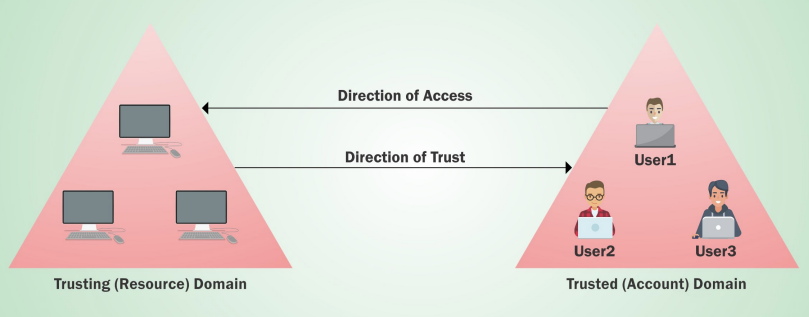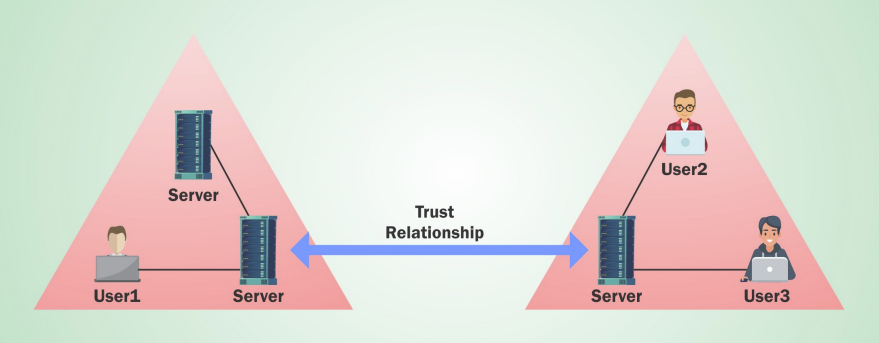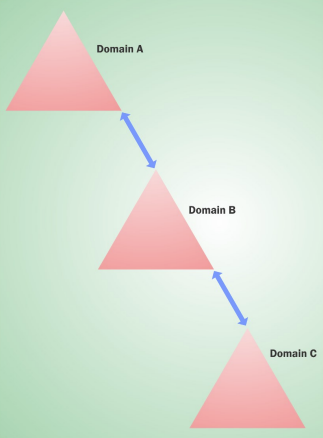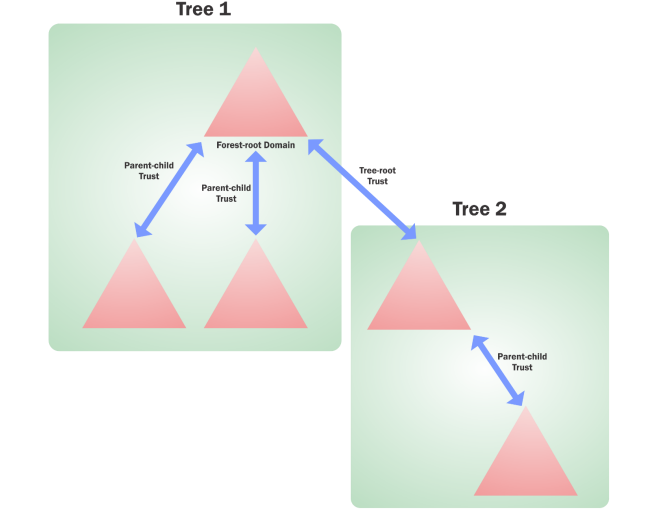Appearance
Trusts
Trusts in Active Directory define relationships between domains and forests, allowing users in one domain to access resources in another. Enumerating trusts can help identify potential attack paths and lateral movement opportunities.
Trust Direction
Trusts can be one-way or two-way. In a one-way trust, one domain trusts another, but the reverse is not true. In a two-way trust, both domains trust each other.
 One-way trust: Users in the trusted domain can access resources in the trusting domain.
One-way trust: Users in the trusted domain can access resources in the trusting domain.
 Two-way trust: Users of both domains can access resources in the other domain.
Two-way trust: Users of both domains can access resources in the other domain.
Transitivity
Trusts can be transitive or non-transitive. In a transitive trust, if Domain A trusts Domain B and Domain B trusts Domain C, then Domain A trusts Domain C. In a non-transitive trust, the trust relationship is limited to the two domains involved.
 Transitive trust: Trust relationships are passed on to other domains.
Transitive trust: Trust relationships are passed on to other domains.Default Trusts
By default, Active Directory creates the following trust relationships:
- Parent-Child Trust: When a new child domain is created, a two-way transitive trust is established between the parent and child domains. For example, if
us.example.localis the child domain ofexample.local, a trust relationship is created between them. - Tree Root Trust: When multiple child domains are created under a parent domain, a two-way transitive trust is established between the root domain and the child domains.
 Default trust relationships in Active Directory
Default trust relationships in Active DirectoryExternal Trusts
An external trust is a trust relationship between two domains in different forests. External trusts can be one-way or two-way and is non-transitive by default.
 External trust relationship between two domains in different forests
External trust relationship between two domains in different forestsForest Trusts
A forest trust is a trust relationship between root domains of two different forests. Forest trusts can be one-way or two-way and are transitive by default.
 Forest trust relationship between two forests
Forest trust relationship between two forestsTrust Enumeration
Get a list of all domain trusts
Retrieve a list of all domain trusts for the current domain:
powershell
Get-DomainTrust
Get-DomainTrust –Domain example.localpowershell
Get-ADTrust
Get-ADTrust –Identity example.local